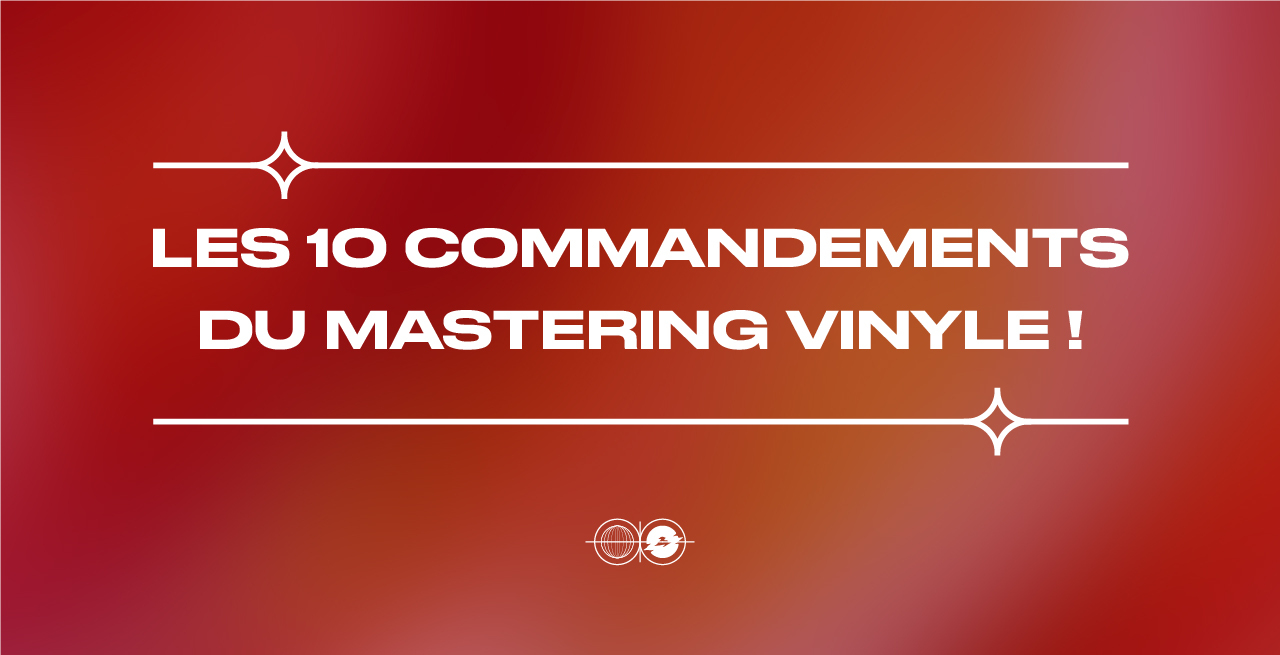The 10 commandments of vinyl mastering!
The 10 commandments of vinyl mastering!
Oct 26, 2022
Diggers Factory has been working with Color Sound Studio for several years in order to provide a reliable vinyl mastering solution to artists. How does it work, and how do you go about it? We asked David from Color Sound to give us a list of 10 points to keep in mind for optimal results. Here they are!

Avoid providing titles mastered for digital with too high a level.
Always provide the format in which you worked the mix. The mastering engineer will take care of a possible conversion!
Take great care with the sibilances of the voices (“s” sounds). Vinyl recorders are sensitive on this subject! If you have a bright enough vocal color on your mix, feel free to send the engineer the separate vocal and instrumental. This will allow a possible treatment on the sibilants and the optimization of the vinyl engraving as well as the definition of the frequencies concerned (between 7khz and 14khz).
Low frequencies on vinyl can be a problem within the phase! For example a too wide bass around 80 Hz. It is better to remove the bass in the phase below 120 Hz (depending on each track of course). This is of paramount importance on the timing of the vinyl because the more phase "errors" and other problems there are in the high frequencies, the less level the engraving will have and the faster the material will scroll! Thus, putting 14 minutes with too high a noise level will be a problem: you have to take measures, which sometimes are done without you being aware at the time of cutting... When the test pressing arrives there may be surprises, and not good ones! Thus, a small "low cut" at 30 Hz raw slope will not hurt.
For the high frequencies, same thing as the low ones but the phase is less problematic. A "high cut" between 15 and 16 kHz with a gentle slope can be a safety measure for the recorder. For example excessive heating of the "chisel" or distortions on your vinyl.
Leave dynamics to your track and to the engineer who will be able to add, using analog machines, the "pro" touch and sublimate the titles with a beautiful coherence on an album for example.
Let's not forget that contrary to popular belief and digital, the material of vinyl is more of a handicap than an advantage. Indeed, because of all these small constraints, we finally have less definition! So why does it often sound warmer, rounder?… Cult albums are always remembered with a perfect sound on vinyl. But if you analyze the level on the vinyl, there is always the same recipe: do not put the levels on the cleats! Our privileged partner had the chance to learn all this with Mr. André Perriat, alias “Dédé”. And he's the one who says it best:
“He made me listen, compare and analyze early in the morning, at around 6 o'clock! In 2006, we even retraced the history of the Thriller album with the different versions. You take a good slap with the increasingly bad remasterings as you advance in time. Your vinyls have dynamics and this allows you to put a good volume on the amp, which therefore does not restore a sluggish mastering and is not adapted to this type of listening that is vinyl.”
Beware of preconceptions with 180 gram vinyl records and their "superior quality". Depending on the turntable, the tonearm setting and other details, the 180g is much stiffer when playing and can be a big disadvantage on some systems, and the difference in audio quality between 140g and 180g has yet to be demonstrated… So long live the 140 grams and raw material savings!
Finally: duration. Not easy not to drown you in technical points, but you have to optimize your durations per face. To put it simply: an album of 20 minutes per side will have a correct level for living room listening in LP mode.
A 4-track EP, a fairly common format in the industry, should not exceed 14 minutes per side in 33 rpm to keep an average level, even if ultimately everything also depends on the style of the mix which will vary the engraving.
- At last, call on real professionals with real references because your music is unique!
Many thanks to David for these super complete answers! Do not hesitate to contact us to launch a project and benefit from the expertise of all our partners throughout the production chain of your vinyl.